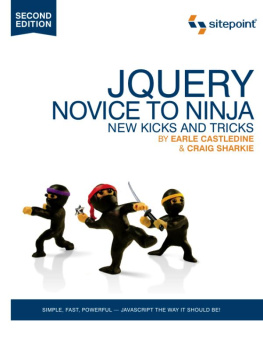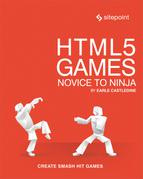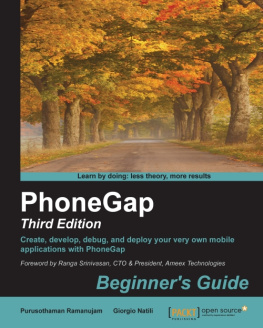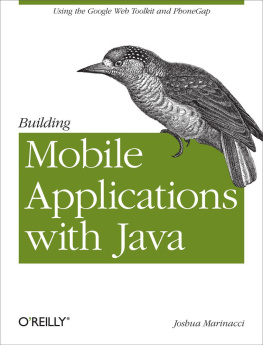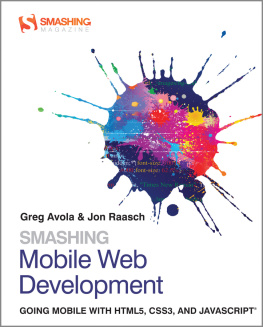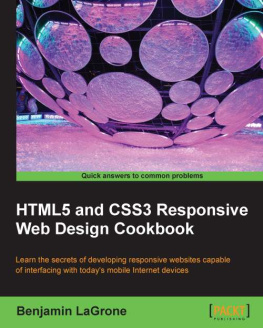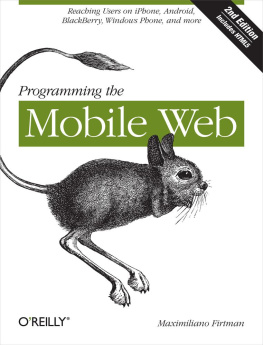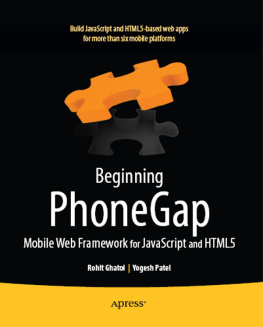Myles Eftos is a Perth-based web developer who feels just as at home building INNER JOINS as calculating the specificity of CSS selectors. He has worked in all the major web languages, his weapon of choice being Ruby on Railsalthough hes found himself doing more front-end development in JavaScript, HTML, and CSS.
Under the moniker of MadPilot Productions (http://www.madpilot.com.au), he has worked on a number of applications such as 88 Miles (http://www.88miles.net). This also includes apps for the iPhone and iPad using PhoneGap, such as the popular Counter Culture (http://www.countercultureapp.com).
He is rather excited that JavaScript is finally receiving the kudos it deserves as a serious language.
About Max Wheeler
An interaction designer, Max Wheeler believes interactive media should function as beautifully as it looks. Currently residing in Canberra, Australia, he works with Icelab (http://icelab.com.au/), a media-agnostic design agency filled with nice, well-caffeinated people. Aside from client work, Icelabs projects include the community-oriented Decaf Sucks and real estate startup RentMonkey.
When Max is not designing or building for the Web, he takes photographs, travels the world, plays Ultimate frisbee for Australia, and drinks twice the daily recommended intake of espresso. On occasion, hes been known to drop in at Web Directions South to speak about building mobile web applications.
About the Expert Reviewer
Peter-Paul Koch is a mobile platform strategist, consultant, and trainer in Amsterdam, the Netherlands. ppk (as he is universally known on the Web) specializes in HTML, CSS, JavaScript, and browser compatibility. He has earned international renown with his browser-compatibility research, and publications such as http://www.quirksmode.org/blog. A frequent speaker at conferences, ppk founded Fronteersthe Dutch association of front-end professionalsand advises browser vendors on their implementation of web standards. In 2009, ppk shifted from desktop browsers and sites to the mobile web, and discovered that mobile devices are in more need of description than their desktop counterparts. He has set himself to the task.
About SitePoint
SitePoint specializes in publishing fun, practical, and easy-to-understand content for web professionals. Visit http://www.sitepoint.com/ to access our blogs, books, newsletters, articles, and community forums.
Preface
Its the year 1995, and youre waiting for an email to download to your state-of-the-art 486 personal computer. Hundreds of megabytes of storage, 16 megabytes of memory, and 256 glorious colors on screen. Suddenly, theres a flash of light in the corner of the room, and Youfrom the futureappear in a time machine. Future You emerges from the mist, and slowly hands you a slick, handheld device. Your eyes widen as you gaze upon the high-resolution display panel. This is your internet now: always on, always with you. High-bandwidth, beautifully smooth animations, stunning visual effects. No tags.
The Web (or at least, our experience of it) has been slowly but steadily evolving and improving since it hit mainstream consciousness late last century. However, the last few years have seen a revolutionary shift in how we consumeand produceinformation: the mobile web. Its more than a smaller, portable webits a fundamental change in how people interact with each other and with your products. Mobile device ubiquity, combined with the openness of the Web, have sparked the imaginations of both consumers and inventors.
The benefits of the old Web are still with us. We can buy tickets or pay bills only now we can do it on the train, or in the bathroom! But even more interesting are the new possibilities opening up to us. When we combine todays hardware with the funky new HTML5 APIs (and some good ol fashion web know-how), we can start to mash up the Internet with our real livesmerging the Web with our immediate surroundings, having relevant data in the palm of our hand when we need it most, and being able to contribute responses and feedback instantly.


